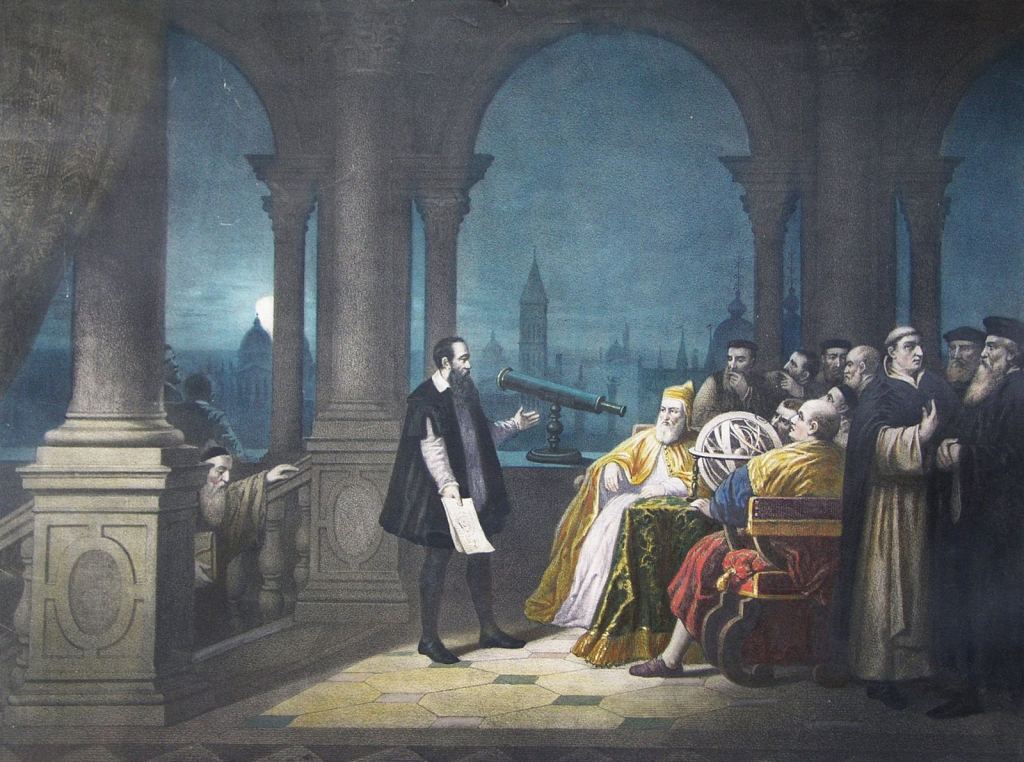So, you think you know Galileo? A new book out from Simon and Schuster publishing looks at the exploits of one of the most famous astronomers there ever was: Galileo Galilei. Galileo and the Science Deniers by Dr. Mario Livio not only looks at the life and times of the famous astronomer, but busts some of the most famous myths surrounding Galileo, and looks at his greatest discoveries and tempestuous clash with the Roman Catholic Church and its aftermath. Livio also connects the science denialism of the day with comparisons to modern clashes between politics and science.
Galileo’s life bridged the gulf between astronomy’s hoary roots in the arcane pseudoscience of astrology and modern astronomy. Galileo urged for experimentation as a method to understand reality and the Universe, rather than the notion of strictly contemplating nature as espoused by Greek thinkers such as Plato and Aristotle that had held sway for millennia.
Galileo and the Science Deniers follows Galileo the experimenter and consummate scientist right up through 17th century super-stardom. The book also takes a hard look at some of the anecdotes that surround Galileo, stories that are often incorporated into sound-bites even today: he probably didn’t drop objects from Pisa’s famous Leaning Tower to study acceleration, or mutter “E pur si muove” (“and yet, it moves”), upon receiving his sentence for supporting Copernicus’ heliocentric theory from the Papal Court.
Galileo didn’t even invent the telescope, and wasn’t the very first person to turn it skyward; instead, he was the first observational astronomer to peer through the eyepiece and attempt to methodically interpret and document what he saw. Galileo was the first ‘publish or perish’ astronomer. He faithfully chronicled what he saw in the sky, often carefully coding and transmitting his finds in Latin to his contemporary Johannes Kepler.

The finds came at an almost nightly pace during the zenith of Galileo’s observing career around 1610: peering through his primitive eyepiece, he saw that Venus went through crescent phases, like the Moon. The Moon’s surface, it turned out, was not smooth and perfect like Aristotle had once held it to be, but mottled with flat maria, craters and mountains. Jupiter hosted its own mini-solar system which he termed ‘Medici stars,’ after his Florentine benefactors, moons that are now instead termed the Galilean moons in the astronomer’s honor. Saturn seemed to have two tiny ‘handles,’ appendages which must have confounded Galileo. And the plane of the Milky Way was flush with faint stars, invisible to the naked eye.
This new view of the Universe also convinced Galileo of the reality of the Copernican view, that the Sun and not the Earth was the center of the Solar System and the Universe. It also caused Galileo to famously run afoul with the Roman Catholic Church, which was still reeling from the Protestant Reformation.
Galileo and the Science Deniers covers the trial and its aftermath. This event still has implications for faith in context with science that echo even today: the Church only reexamined the trial of Galileo in the mid-20th century, and reassessed its view in 1992.
Read Galileo and the Science Deniers to look at the life and a pivotal moment in modern science and astronomy.

